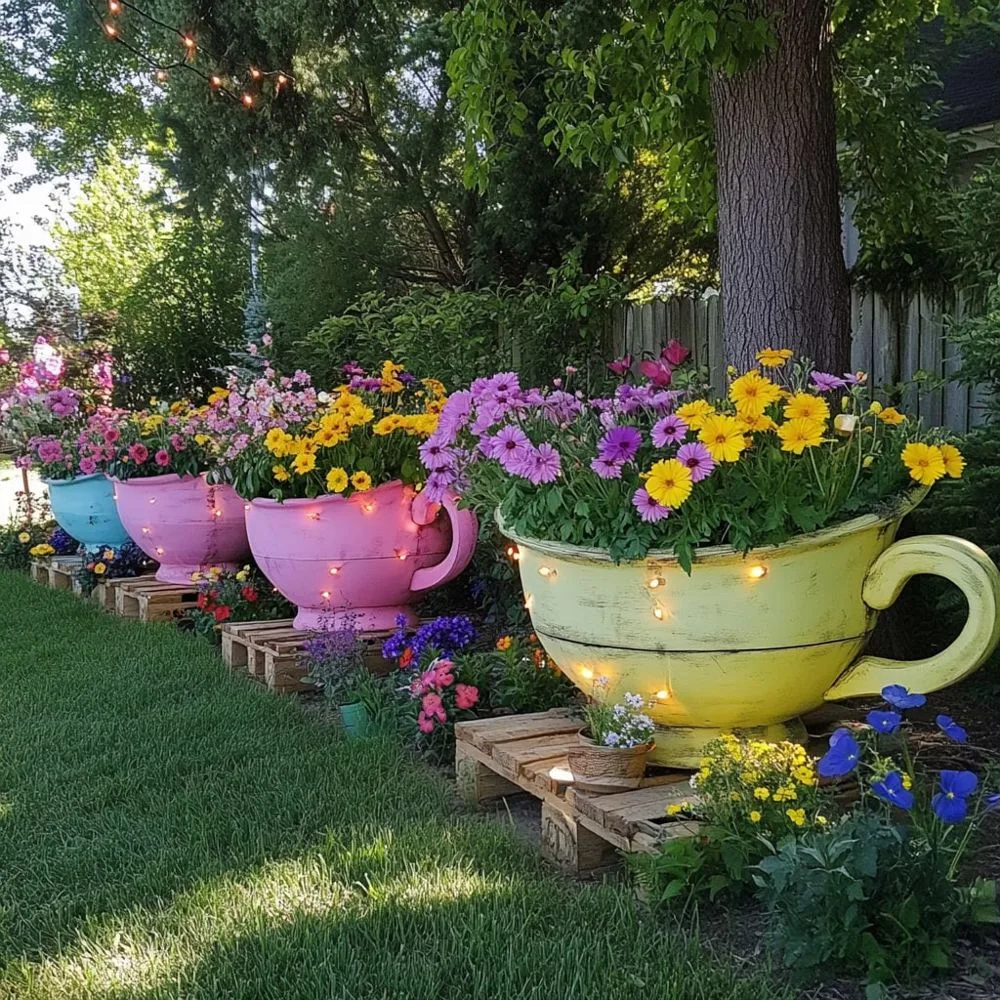There’s something undeniably delightful about a teacup planter. These tiny, whimsical creations combine the elegance of vintage teacups with the natural beauty of plants, making them a perfect addition to any home. Whether you’re a seasoned plant parent or just dipping your toes into the world of indoor gardening, teacup planters offer a unique way to bring greenery into small spaces. In this comprehensive guide, we’ll explore everything you need to know about these planters—from choosing the right one to styling them in your home and keeping your plants thriving.
What Is a Teacup Planter?
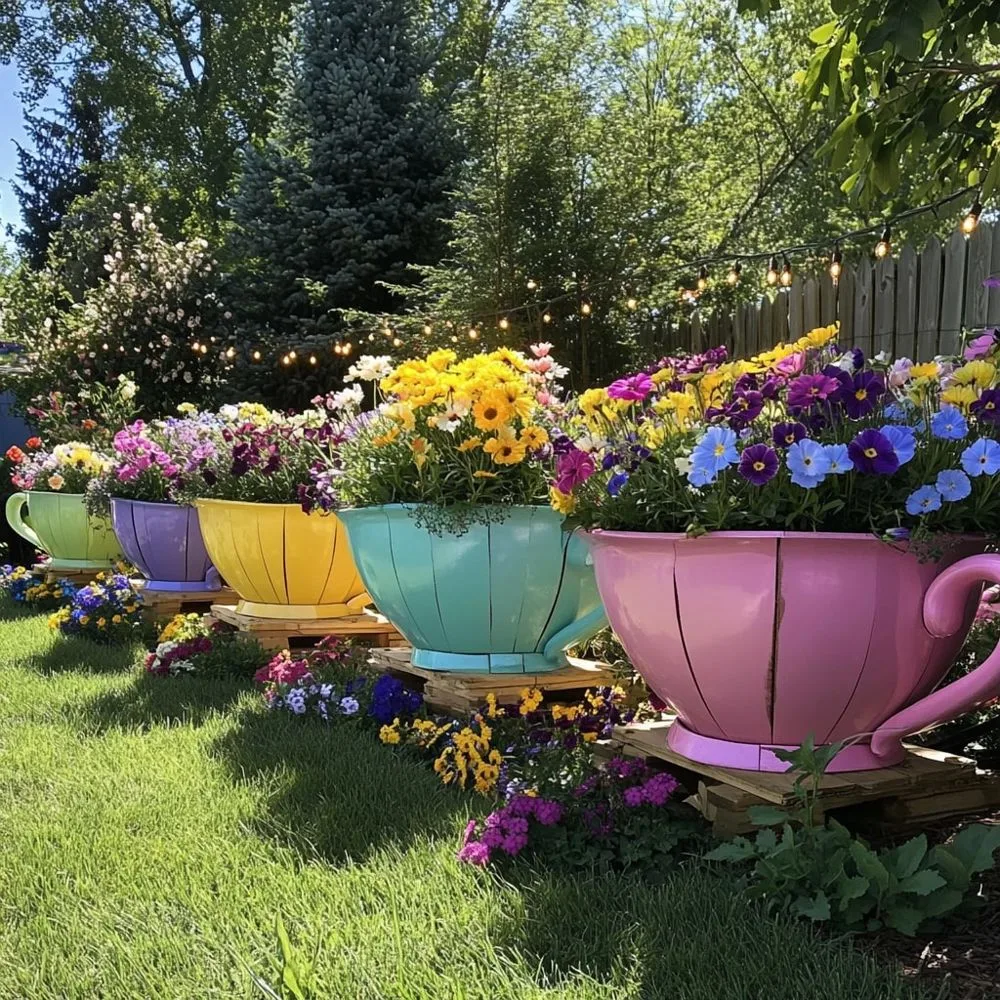
A teacup-shaped planter is exactly what it sounds like: a teacup repurposed as a small plant pot. Typically made from ceramic or porcelain, these planters are ideal for housing succulents, cacti, or other petite plants that don’t require much space or soil. The charm of a teacup planter lies in its versatility—it’s both a functional gardening tool and a decorative piece that adds personality to your space.
Why Choose a Teacup-Shaped Planter?
Teacup-shaped planters have surged in popularity for several reasons. First, they’re eco-friendly, giving new life to old or chipped teacups that might otherwise end up in the trash. Second, their compact size makes them perfect for apartments, offices, or any area where space is limited. Finally, they’re an affordable way to experiment with indoor gardening without committing to large pots or complex setups.
How to Choose the Perfect Teacup Planter
Not all teacups are created equal when it comes to planting. Here’s what to consider when selecting the ideal teacup wooden pallet planter for your needs.
Material Matters
Most teacup planters are made from ceramic or porcelain, which are durable and retain moisture well—great for plants like succulents. However, you might also find glass or metal teacups. While these can work, ensure they’re safe for plants and won’t rust or overheat.
Drainage Considerations
One downside of using a teacup as a planter is the lack of drainage holes. Without proper drainage, water can pool at the bottom, leading to root rot. Look for teacups with a small hole drilled in the base, or plan to add a layer of pebbles for drainage if you’re DIY-ing your teacup planter.
Size and Shape
Teacups come in all shapes and sizes, from dainty espresso cups to oversized mugs. For a teacup planter, opt for one that’s wide enough to accommodate your plant’s roots but not so deep that soil stays soggy. A standard 6-8 ounce teacup is a good starting point for most small plants.
Aesthetic Appeal
The beauty of a teacup-shaped planter is its ability to double as decor. Choose a design that complements your style—vintage floral patterns for a cottagecore vibe, sleek white porcelain for a modern look, or quirky novelty cups for a playful touch.
Best Plants for Your Teacup-Inspired Planter
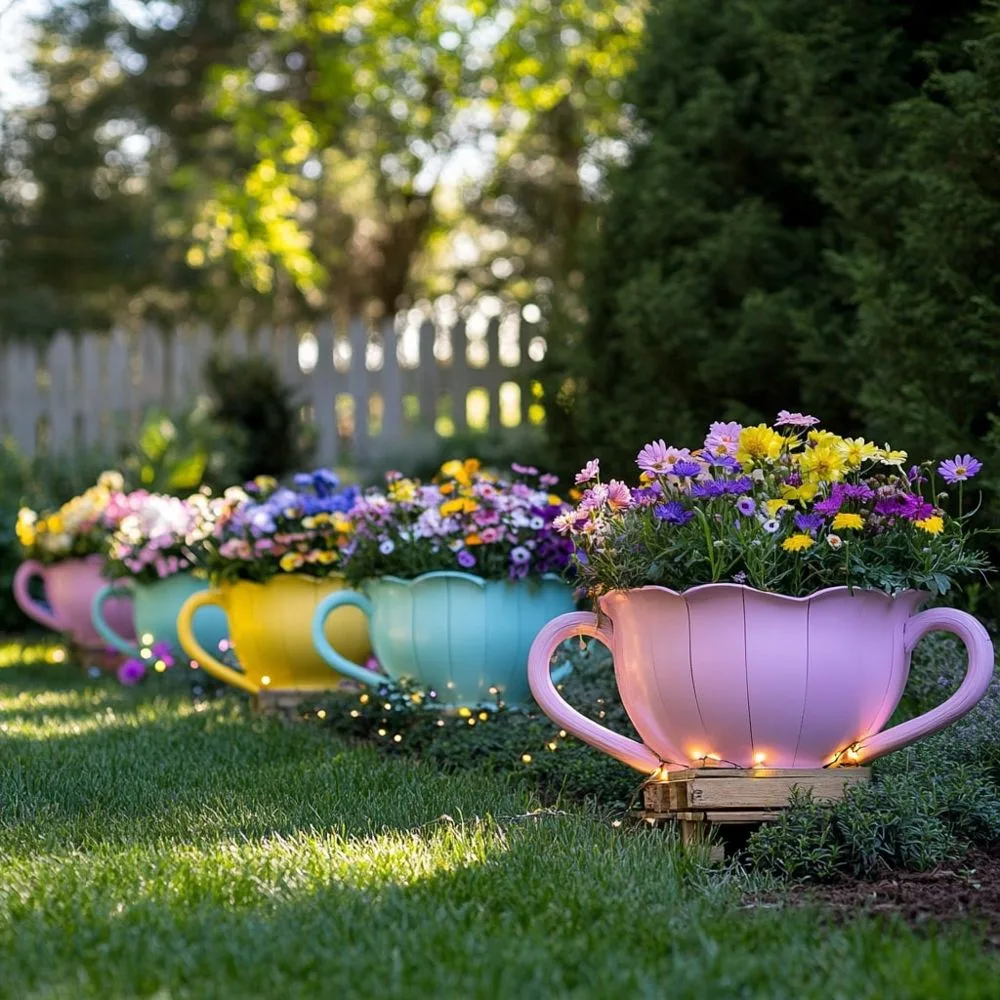
Not every plant thrives in a teacup planter. Due to their small size and limited soil capacity, you’ll want to stick to low-maintenance, compact plants. Here are some top picks.
Succulents
Succulents are the MVPs of teacup planters. Their shallow root systems and minimal water needs make them a perfect match. Popular options include echeveria, haworthia, and jade plants.
Why Succulents Love Teacup Planters
Succulents thrive in well-draining environments, and with a few tweaks (like adding pebbles), a teacup planter can mimic their ideal conditions. Plus, their sculptural shapes look stunning against the delicate backdrop of a teacup.
Cacti
Like succulents, cacti are drought-tolerant and don’t mind cramped quarters. A small barrel cactus or prickly pear can add a desert-chic vibe to your teacup planter.
Herbs
For a functional twist, try growing herbs like thyme, mint, or basil in your teacup planter. These plants do well in small containers, provided you keep the soil moist and give them plenty of sunlight.
Caring for Herbs in a Teacup Planter
Herbs need more water than succulents, so monitor soil moisture closely. Place your teacup-inspired planter near a sunny window to keep them happy.
How to Make Your Own Teacup Planter
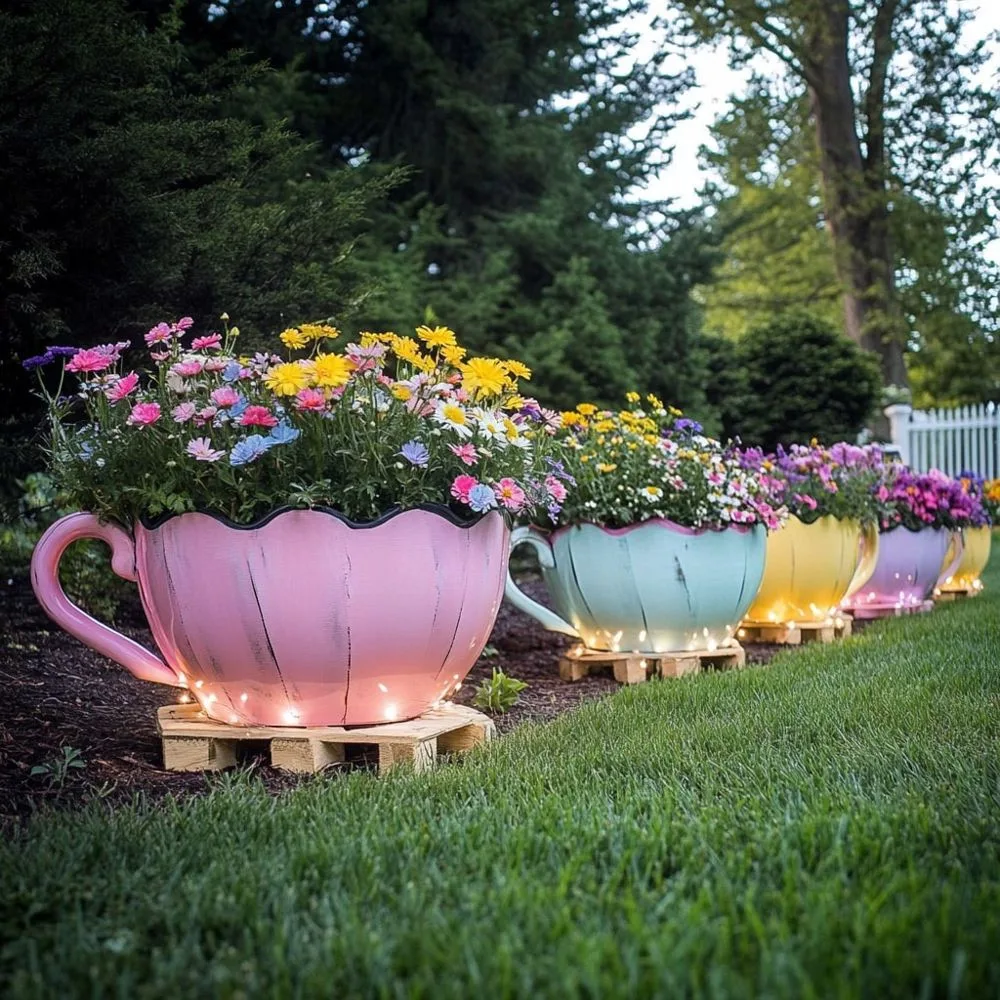
Creating a teacup pallet wooden planter is a fun, budget-friendly DIY project. Here’s a step-by-step guide to get you started.
What You’ll Need
- A teacup (with or without a saucer)
- Small pebbles or gravel
- Potting soil (specific to your plant type)
- A small plant
- Optional: a drill for drainage holes
Step-by-Step Instructions
- Prep the Teacup: If your teacup doesn’t have a drainage hole and you’re comfortable drilling, use a ceramic drill bit to carefully add one. If not, proceed to the next step.
- Add Drainage: Place a 1-inch layer of pebbles at the bottom of the teacup to prevent water buildup.
- Fill with Soil: Add a layer of potting soil suited to your plant—cactus mix for succulents, or all-purpose soil for herbs.
- Plant: Gently nestle your plant into the soil, pressing down lightly to secure it.
- Water Sparingly: Give your new teacup wooden planter a light watering, being careful not to overdo it.
Pro Tip: Personalize It
Paint the teacup, add decals, or pair it with a matching saucer for extra flair. Your teacup pallet planter should reflect your personality!
Styling Your Teacup Planter at Home

A pallet teacup wooden planter isn’t just a plant holder—it’s a decor statement. Here’s how to style it in different spaces.
On a Windowsill
Place your teacup planter on a sunny windowsill for a classic look. Group several together in mismatched designs for an eclectic feel, or line them up in uniform cups for a cohesive display.
As a Table Centerpiece
A teacup shaped planter makes a charming centerpiece for a dining or coffee table. Pair it with a saucer and surround it with candles or small trinkets for a curated vibe.
Office Desk Decor
Brighten up your workspace with a teacup-inspired planter. Its small footprint fits perfectly on a desk, adding a touch of nature without cluttering your space.
Hanging Teacup Wooden Planters
For a creative twist, turn your teacup planter into a hanging display. Use macramé cord or wire to suspend it from a hook—just ensure it’s secure!
Caring for Your Teacup-Inspired Planter
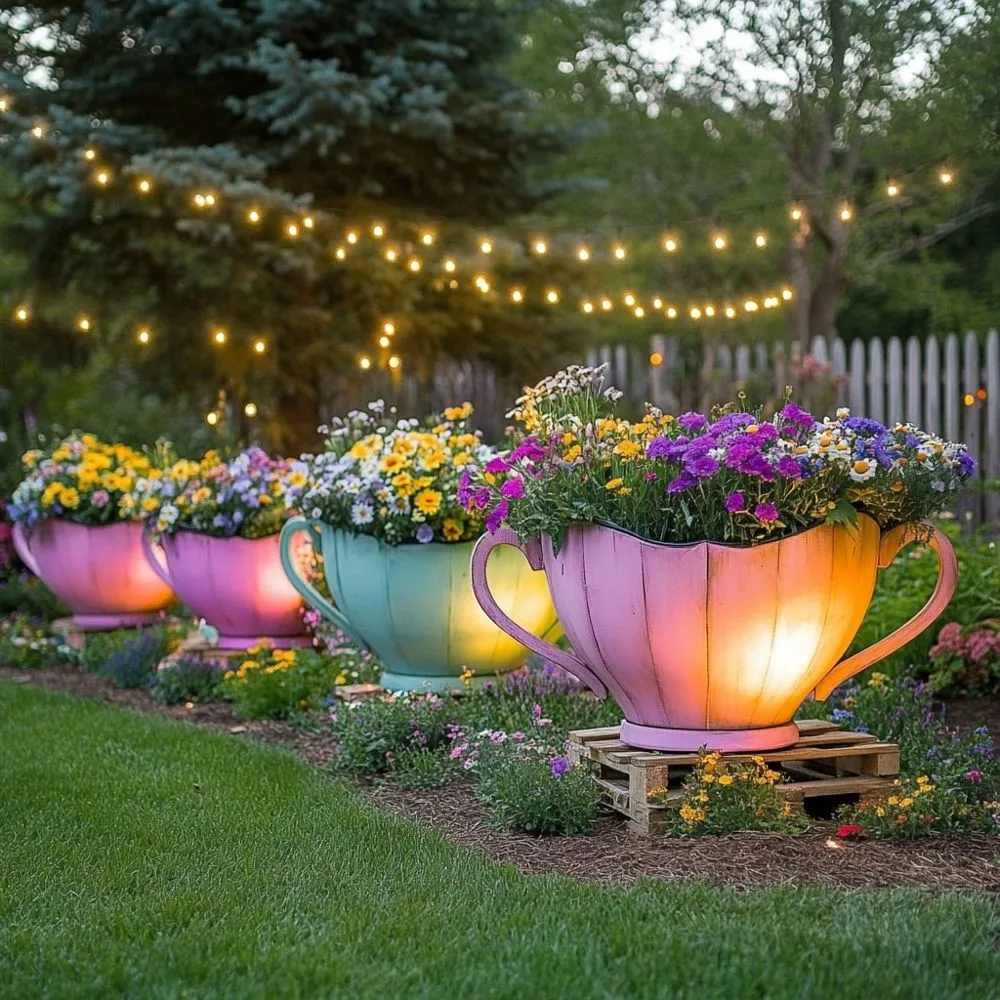
To keep your teacup planter thriving, follow these care tips tailored to its unique setup.
Watering Wisely
Overwatering is the biggest threat to a teacup planter. Check the soil with your finger—if it’s dry an inch down, it’s time to water. Use a small watering can or syringe for precision.
Sunlight Needs
Most plants suited for teacup planters love bright, indirect light. A south- or west-facing window is ideal, but adjust based on your plant’s preferences.
Troubleshooting Common Issues
- Yellowing Leaves: Likely overwatering—cut back and check drainage.
- Wilting: Could be underwatering or too much direct sun—adjust accordingly.
Soil and Fertilizer
Refresh the soil every 6-12 months, as nutrients deplete quickly in small containers. A diluted liquid fertilizer (used sparingly) can give your teacup pallet planter a boost during the growing season.
Where to Buy Teacup Planters
If DIY isn’t your thing, you can find ready-made teacup wooden planters online or in stores.
Online Marketplaces
Etsy and Amazon offer a wide range of teacup planters, from handmade artisan pieces to budget-friendly sets. Search for “teacup planter” and filter by style or plant type.
Local Options
Check out thrift stores, antique shops, or garden centers. You might score a vintage teacup to repurpose or a pre-planted teacup planter ready to go.
Budget-Friendly Tip
Hit up garage sales for unique teacups at a fraction of the cost—perfect for crafting your own teacup planter collection.
Why Teacup Planters Are Here to Stay
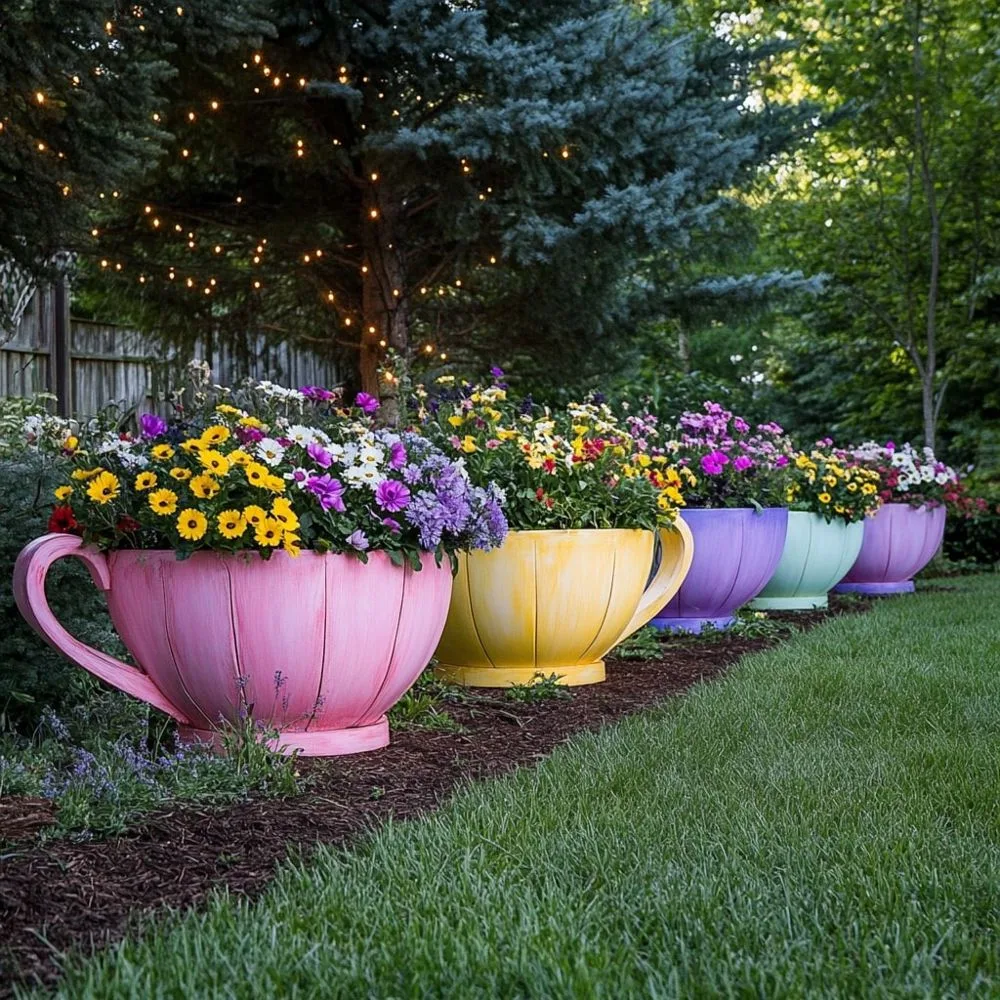
The teacup planter trend shows no signs of slowing down, and it’s easy to see why. They’re affordable, sustainable, and endlessly customizable. Whether you’re gifting one to a friend or building a mini garden for yourself, teacup planters bring joy to any space.
A Sustainable Choice
Repurposing teacups reduces waste and gives old items a new purpose. It’s a small but meaningful way to embrace eco-friendly living.
Perfect for Gifting
A teacup planter filled with a succulent or herb makes a thoughtful, personalized gift for birthdays, housewarmings, or holidays.
Creative Ideas to Take Your Teacup Planter to the Next Level
Once you’ve mastered the basics of a teacup pallet wood planter, it’s time to get creative. These tiny vessels offer endless opportunities for personalization and experimentation. Here are some fresh ideas to inspire your next project.
Themed Teacup Planters
Why settle for a plain teacup planter when you can craft one with a theme? Match your teacup to a specific vibe or season for a standout piece.
Seasonal Teacup Planters
- Spring: Fill a pastel teacup with tiny daisies or pansies for a fresh, floral look.
- Summer: Pair a bright, tropical-patterned teacup with a mini aloe plant.
- Fall: Use a rustic teacup in earthy tones and plant a small sedum for autumnal charm.
- Winter: Opt for a white teacup with a mini evergreen clipping or a faux snow accent.
Holiday-Inspired Designs
A teacup planter can double as festive decor. For Christmas, add a tiny pine cutting and a red ribbon around the handle. For Halloween, paint the teacup black and plant a spooky-looking air plant. Themed planters are perfect for seasonal gifting or sprucing up your holiday table.
Multi-Plant Teacup Planters
Who says a teacup planter can only hold one plant? If your teacup is wide enough, try a mini arrangement. Combine a small succulent with a trailing plant like string of pearls for a lush, layered effect. Just ensure the plants have similar light and water needs.
How to Arrange Multiple Plants
- Start with a base layer of pebbles for drainage.
- Add soil, then position your tallest plant in the center.
- Tuck smaller or trailing plants around the edges.
- Water lightly and monitor for overcrowding as they grow.
Teacup Planter Terrariums
For a magical twist, turn your teacup-shaped planter into a mini terrarium. Layer pebbles, activated charcoal, and moss, then add a tiny plant like a fittonia or baby’s tears. Top it with a glass cloche (or skip it for an open terrarium). This setup thrives in humid environments like bathrooms or kitchens.
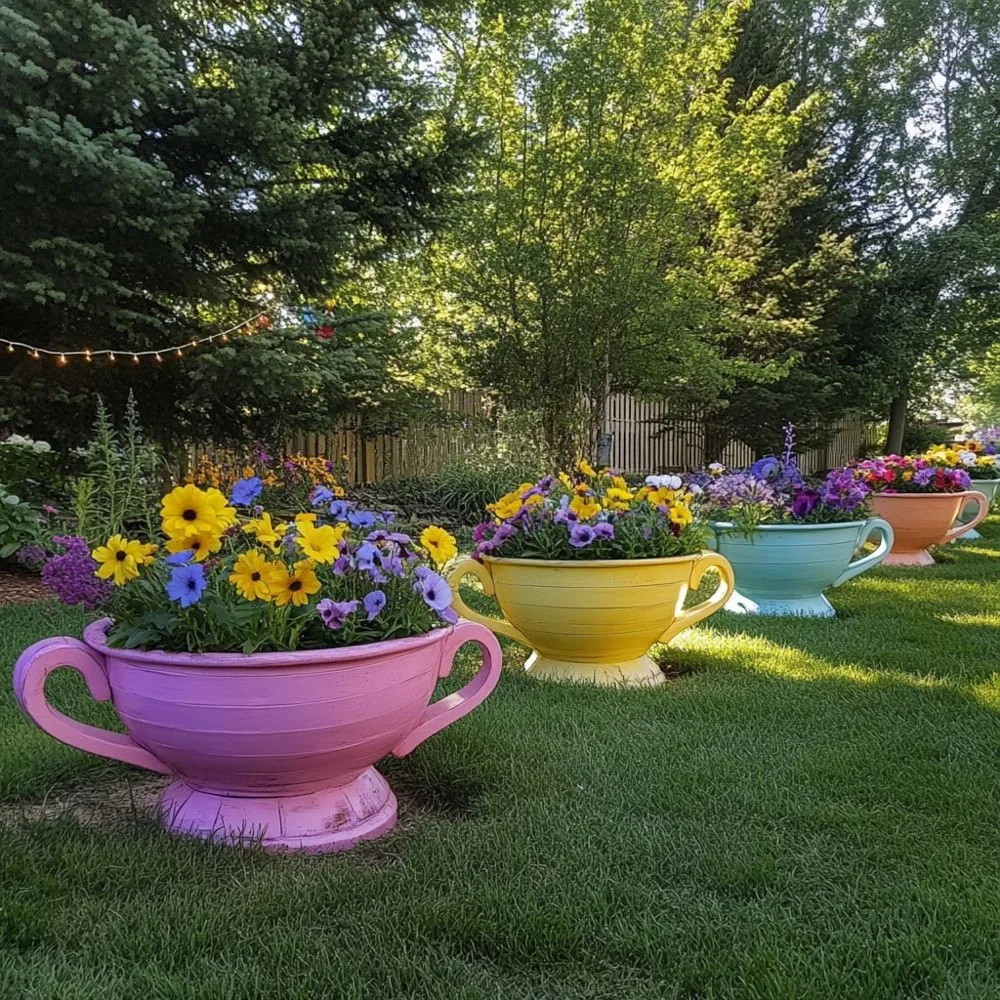
Teacup Planters for Special Occasions
A teacup planter isn’t just for everyday decor—it can shine at events and celebrations, too. Here’s how to use them for life’s big moments.
Wedding Favors
Teacup planters make adorable, budget-friendly wedding favors. Fill them with succulents, tie a “thank you” tag around the handle, and let guests take home a living memento. Choose teacups that match your wedding theme—vintage china for a classic affair or sleek modern cups for a contemporary vibe.
DIY Wedding Teacup Planter Tips
- Buy teacups in bulk from thrift stores or online wholesalers.
- Pre-plant them a week ahead to ensure they’re settled.
- Add a care card so guests know how to keep their teacup planter alive.
Party Decor
Hosting a tea party or brunch? Scatter teacup planters across the table as centerpieces or place settings. They add a whimsical touch that ties into the tea theme perfectly. For a baby shower, plant pastel-colored teacups with delicate blooms like violas.
Memorial Keepsakes
For a sentimental touch, a teacup planter can honor a loved one. Use a teacup from their collection, plant their favorite flower, and place it in a special spot. It’s a beautiful way to keep their memory alive.
Elevate Your Space with a Teacup Planter
In a world of mass-produced decor, a teacup planter stands out as a charming, handmade treasure. Whether you’re drawn to its vintage appeal, its compact size, or its DIY potential, this little planter packs a big punch. From succulents to herbs, the possibilities are endless—and with a bit of care, your teacup planter can thrive for years to come. So why not grab a teacup, pick a plant, and start your mini gardening adventure today? Your home (and your green thumb) will thank you.

